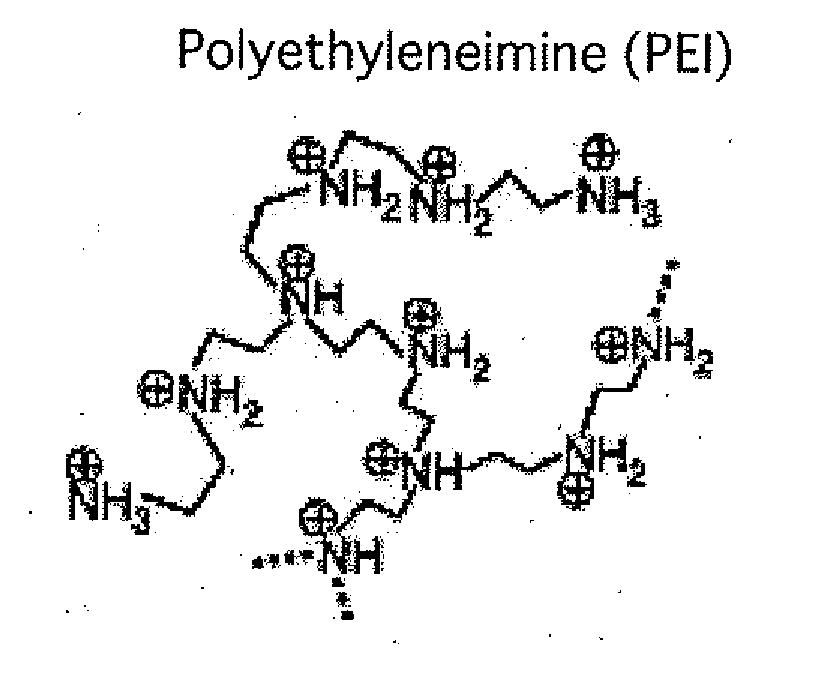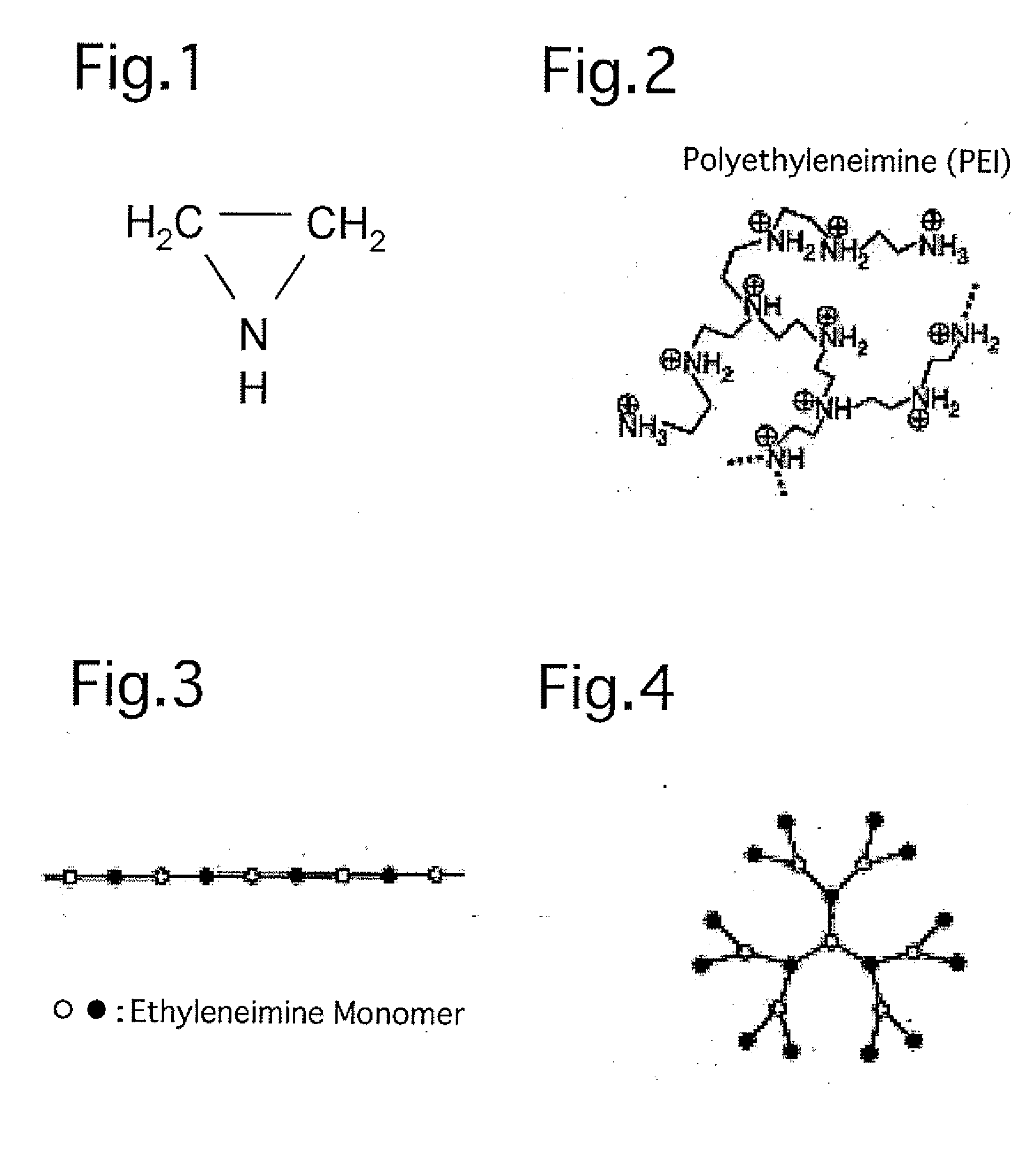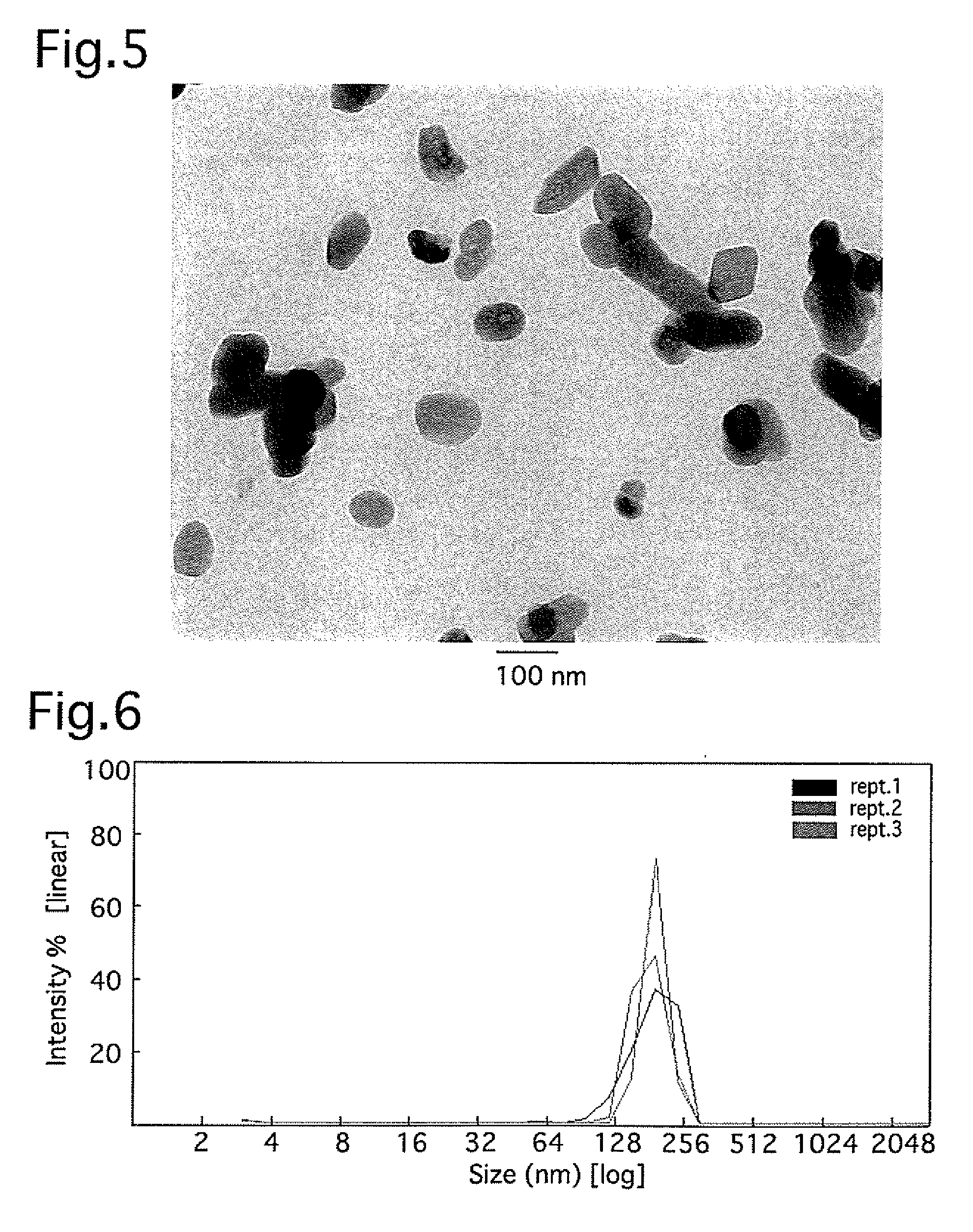Highly dispersible inorganic compound nanoparticles and method of production thereof
a technology of inorganic compound and nanoparticles, which is applied in the field of high dispersibility inorganic compound nanoparticles, can solve problems such as deterioration of sensitivity, and achieve the effects of high dispersibility, good dispersibility, and efficient production method
- Summary
- Abstract
- Description
- Claims
- Application Information
AI Technical Summary
Benefits of technology
Problems solved by technology
Method used
Image
Examples
example 1
Preparation of hydroxyapatite particles
[0076] Phosphate water solution and calcium salt water solution were mixed to provide a slurry containing hydroxyapatite. The slurry containing hydroxyapatite was dried with a spray-dry equipment at 200° C., and then granulated. In addition, the slurry containing hydroxyapatite was classified into a mean particle size of 10μm. The obtained hydroxyapatite particles were inserted into an electric oven and thermally treated. The thermal treatment was performed by rising the temperature at the rate of 50° C. / hr to 850° C. and then maintaining the temperature at 850° C. for four hours to obtain hydroxyapatite particles (hereinafter referred to as HA particles). Preparation of hydroxyapatite nanoparticles covered with polyethylene imine (PEI)
[0077] 1.0 g of the HA particles were placed in a 45 ml pot (made from zirconia) and were dry mill treated with a Planetary ball mill (manufactured by Fritsch Ltd., :P-7) at a milling rotation of 800 rpm for ...
example 20
[0084] In Example 2, instead of hydroxyapatite nanoparticles, magnesium oxide nanoparticles were covered with PEI as follows. 1 g of magnesium oxide nanoparticles were added to 30 ml of PEI solution adjusted to the concentration of 0.03 mg / ml to disperse, and the magnesium oxide nanoparticles were covered with PEI by ultrasonicating (output 180 W for I min) with an ultrasonic generator (TAITEC Ltd. VP-30S)(output 180 W, 1min.)( PEI / nanoparticle weight ratio =1 mg / g). Thereafter distilled water was added to make a total amount of 50 ml, and centrifuged at 4100×g for 5 minutes. The supernatant obtained after centrifuging, namely, the PEI covered magnesium oxide nanoparticle dispersion liquid, was collected.
[0085] The results of various analysis of the PEI covered magnesium oxide nanoparticles obtained in this example are as follows.
[0086] (A) Particle Shape
[0087]FIG. 7 is a scanning electron microphotograph of the PEI covered magnesium oxide nanoparticles. The nanoparticles were li...
example 3
[0090] In Example 3, PEI covered alumina nanoparticles were prepared by the process similar to Example 2, except that 1 g of alumina nanoparticles (C. I. KASEI Ltd., JAPAN, NanoTek Powder: Al2O3 ) were used instead of magnesium oxide nanoparticles, and were covered with 30 ml of PEI solution which was adjusted to a concentration of 1.75 mg / ml (PEI / nanoparticles weight ratio=50 mg / g)
[0091] The results of various analysis of the PEI covered alumina nanoparticles obtained in this example are as follows.
[0092] (A) Particle Shape
[0093] The PEI covered alumina nanoparticles were dispersed with several 5 nm to 150 nm sized spherical nanoparticles gathered together.
[0094] (B) Particle Size Distribution
[0095] According to the dynamic scattering process, the average particle size of nanoparticles in the PEI covered alumina nanoparticles dispersion liquid was about 194 nm.
PUM
| Property | Measurement | Unit |
|---|---|---|
| particle size | aaaaa | aaaaa |
| particle size | aaaaa | aaaaa |
| particle size | aaaaa | aaaaa |
Abstract
Description
Claims
Application Information
 Login to View More
Login to View More - R&D
- Intellectual Property
- Life Sciences
- Materials
- Tech Scout
- Unparalleled Data Quality
- Higher Quality Content
- 60% Fewer Hallucinations
Browse by: Latest US Patents, China's latest patents, Technical Efficacy Thesaurus, Application Domain, Technology Topic, Popular Technical Reports.
© 2025 PatSnap. All rights reserved.Legal|Privacy policy|Modern Slavery Act Transparency Statement|Sitemap|About US| Contact US: help@patsnap.com



